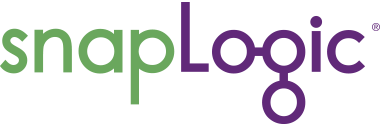Welcome to summer break—or summer term, depending on your current educational perspective. With the first half of the year behind us, we are taking a timeout to share highlights from some of the most interesting conversations we have had with EdTech vendors to date.
In our pursuit to assist Eduventures’ members in their vendor selection processes for all manner of products and services, we’ve been particularly active in advising institutions on enrollment marketing solutions. Beyond our deep coverage of the college application and portfolio market, here we feature a few companies worth mentioning since our last update.





SnapLogic
With the rise of data-hungry analytics and retention solutions, data integration has become a primary concern for higher education chief information officers and chief data officers. The costliest portion of any new technology project involving middleware is the integration of custom data sources. SnapLogic provides an integration platform as a service (iPaaS) to connect the campus ecosystem of on-premise and cloud applications. We met with Tyler Stowell, Global Account Manager, to learn more about the company’s approach to application integration for institutions. Its solution includes many off-the-shelf adapters, known as “snaps,” for commonly used enterprise student information systems (SIS), constituent relationship management (CRM) platforms (e.g., Oracle, Workday, SAP, and Salesforce), and social data streams (e.g., Facebook, Twitter and LinkedIn). These adapters reduce the time it takes IT staff to get data in and out of existing systems and to gather it from other structured data sources, such as flat files from lead-generation companies. While it does not currently support all of the most common higher education data sources or standards, SnapLogic provides developer documentation and training for campus IT to build additional adapters independently. The company also offers professional services and skilled developers to institutions that need assistance integrating custom data sources and systems.Our Take
SnapLogic faces stiff competition from other well-known system integration platforms—including Informatica, WebMethods, Boomi, and Mulesoft —but it may have the edge when it comes to supporting a developer community to build the additional adapters that institutions need most.
HelioCampus
A review of vendors on the move within higher education is incomplete without mentioning analytics. HelioCampus spun out of University of Maryland University College (UMUC) in late 2015, after proving its product’s value to UMUC stakeholders by using big data for educational purposes. Last month, we met with Darren Catalano, Chief Executive Officer, who explained the company’s approach to data science and how it differs from more well-known competitors such as Civitas and Education Advisory Board. When institutions implement analytics platforms, there is often a lack of connection to education-specific data sources, insight into data prioritization, and skills to develop analytic models. A subscription to HelioCampus includes access to professional services, including outsourced data scientists with general educational data experience and some deeper function expertise on higher education data systems. While HelioCampus does include a best-of-breed data analytics platform with preconfigured integrations for common sources, the availability of its professional services team to assist with educational intelligence storytelling is what really sets it apart.Our Take
HelioCampus is relatively new to an already crowded analytics market, but Eduventures believes that it is well-positioned to address the shortage of data scientists and specialized skills that plague higher education today. Stay tuned for our Deep Dive on predictive analytics in higher education, in which we will discuss the need for professional development among institutional staff and robust outsourced data science resources.
DigArc
Much attention is paid to solutions that help faculty develop courses through a learning management system (LMS). It is important to remember, though, that faculty start developing and showcasing the academic curriculum in the ubiquitous course catalog well before the start of the academic term. John Rynn, Chief Operating Officer at DigArc, met with our team to talk about two of the most widely used solutions for catalog and curriculum management: DigArc’s Acalog and Curriculog products. Recognizing that the course catalog is an important branding opportunity, Acalog provides enrollment marketers and the registrar with full control over the look and feel of the finished document. The catalogs produced by the platform are not static PDF files. They are fully interactive sites and native mobile apps that allow students to browse and track courses and programs of interest. Most importantly, integration through application program interfaces (API) enables students to cross-reference course descriptions from the catalog with the official syllabus in an LMS or course equivalencies in a degree planner or SIS.Our Take
The Curriculog cloud-based service allows institutions to handle change management for existing curriculum and enables deans and faculty to review new programs. One challenge that DigArc continues to face is the lack of standardization among institutions in the curriculum management process. Many of its clients require additional assistance with internal process change management to realize that while software can automate an existing system, the real opportunity is to normalize the process and question the necessity of various steps.

